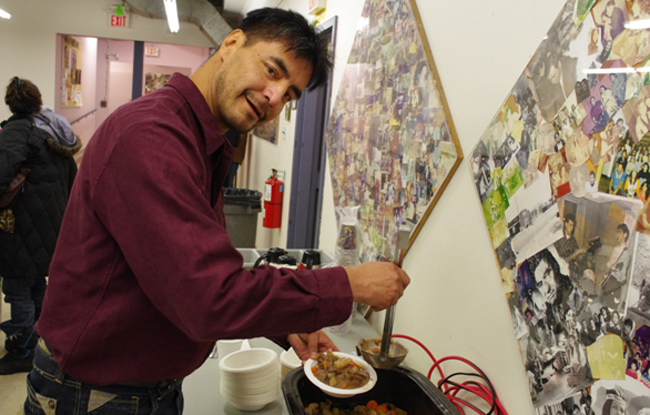Results higher than expected in Thunder Bay’s homeless count

By Rick Garrick
Thunder Bay’s Jan. 16-17 Point in Time Count of homeless people resulted in higher than expected numbers at the Thunder Bay Indian Friendship Centre survey site.
“There was a lot more than we expected,” says Tamara Spence, president of the Thunder Bay Indian Friendship Centre and Red Rock Indian Band citizen. “We really exhausted resources in every way. We thought we would have about 100 people, but I would say we had three to four times that number overall just here at the centre. The numbers, actually, are quite alarming.”
Spence says about 100 homeless people were surveyed during her six-hour shift on the afternoon of Jan. 17 at the TBIFC. She estimates that about 60-70 per cent of the homeless people she dealt with personally during her shift were Aboriginal.
“I would say it is a huge issue that needs to be addressed,” Spence says. “We really need to come together as a community to improve the living conditions of our people, non-aboriginal and Aboriginal included. The community really needs to pull together and see what we can do to make a level ground for social issues and employment. We really need to do our best to try to make it a better place to live.”
The Point in Time Count was held in conjunction with a survey for the 20,000 Homes Campaign, which is a housing registry that aims to house 20,000 of Canada’s most vulnerable homeless people by July 1, 2018. The two surveys were led by the Thunder Bay Indian Friendship Centre and the Lakehead Social Planning Council with support from the Thunder Bay Drug Strategy and Lakehead Social Planning Council-approved Poverty Reduction Strategy. The Point in Time Count was funded by the federal government’s Homelessness Partnering Strategy. About 108 volunteers signed up to conduct the surveys over a 24-hour period at the Thunder Bay Indian Friendship Centre and Shelter House Thunder Bay.
“This initiative is a first step in trying to help the homeless people, and help them find homes,” says Charlene Baglien, executive director of the Thunder Bay Indian Friendship Centre and Fort William citizen. “Hopefully, with our community efforts, we can house homeless people and help them in their life’s journey so we can be a healthy community.”
Baglien says housing would help the homeless integrate back into the community, get jobs, go to school, find doctors and find healthcare.
Fort William Chief Peter Collins says the Point in Time Count and the 20,000 Homes Campaign are “great” initiatives.
“When we talk about homelessness, we also talk about despair, we also talk about addictions and the other things that come along with it, suicide and all that,” Collins says.
“We must work harder to help those who are struggling with addictions, homelessness and all the other things that come along when you are in that situation.”
Tim Richter, president and CEO of the Canadian Alliance to End Homelessness, says 17 people known to Shelter House Thunder Bay died in the past year.
“I can tell you as someone who is not from here, that that is alarming,” Richter says, noting that Toronto, with 2.6 million people and 4,000 emergency shelter beds, lost 43 homeless people last year. “People in Thunder Bay are dying because they are homeless, and we have to act. It can’t just be a research project or a study or an awareness raising exercise.”
Thunder Bay-Rainy River MP Don Rusnak says the issues behind Thunder Bay’s homeless situation “are complex.”
“More needs to be done, and more is going to be done,” Rusnak says. “I can assure you that our (federal) government is looking at all aspects of the crisis, which indeed is here in Thunder Bay a crisis.”


